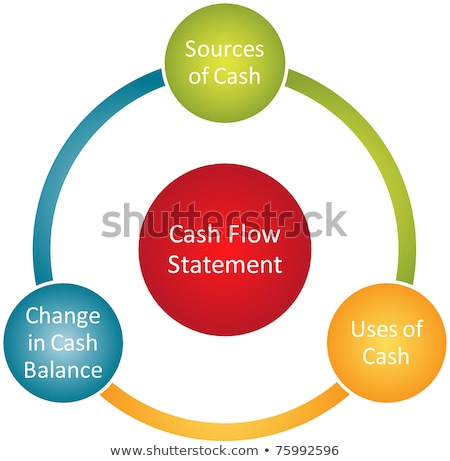Contents:


Price stabilisation benefits retail investors during volatile share price fluctuations. It also provides them with an exit window in case they are not comfortable with the volatile prices. If the IPO documentation says that the company has a greenshoe option agreement with its underwriter, such investors can be confident that the share price of the company will not fall far below the offer price. When a company decides to go public, they begin the process by choosing an investment bank, also known as an underwriter. The underwriter acts like a broker between the issuing company and the public to sell its initial batch of shares.
They should be returned to the promoters immediately within 2 working days after the close of the stabilization period. IPO underwriters are typically funding banks that have IPO specialists on staff. These funding banks work with an organization to ensure that all regulatory necessities are glad. The IPO specialists contact a large network of investment organizations, such as mutual funds and insurance coverage corporations, to gauge funding interest.
They receive no specific incentives or concessions from the government or any other Regulator. It provides buying power to cover short positions if prices fall, without the risk of having to buy shares if the price rises. 24 years old Early Childhood (Pre-Primary School) Teacher Charlie from Cold Lake, has several hobbies and interests including music-keyboard, forex, investment, bitcoin, cryptocurrency and butterfly watching. Is quite excited in particular about touring Durham Castle and Cathedral. After the recession following the 2008financial disaster, IPOs floor to a halt, and for some years after, new listings have been rare. More lately, much of the IPO buzz has moved to a focus on so-calledunicorns—startup companies that have reached non-public valuations of greater than $1 billion.
The trading of any securities of the issuer on stock exchanges or in OTC market, if limited or sporadic. Listing requirements of any recognised stock exchange in India or abroad and the details of penalty, if any including suspension of trading, imposed by such exchange. The stabilising agent shall submit a report to the stock exchange on a daily basis during the stabilisation period and a final report to the Board in the format specified in .
As a shareholder you have the option to own company’s shares directly with the Company. These would be returned to the promoters by the stabilization agent in lien of those borrowed from them and the G.S.O demat account would be closed. Such shares would be listed in all the concerned Stock Exchanges where the shares allotted in the public issue are listed.
- When SEBI approves the process, SEBI will start the IPO process.
- Green Shoe Manufacturing Company was the first company to incorporate the green shoe clause in its underwriting agreement.
- Thus, the definition of AIFs includes venture Capital Fund, hedge funds, private equity funds, commodity funds, Debt Funds, infrastructure funds, etc.
- Price stabilisation for the business, the market, and the economy are made possible by this option.
- Large- cap equity funds invest in stocks of large, liquid blue-chip companies with stable performance and returns.
The stabilizing agent is one of the merchant bankers/book runners. The stabilization agent borrows shares from the promoters/pre issue share holders. The merchant banker in consultation with the Stabilization Agent determines the amount of shares to be allotted in excess of the public issue. The excess allotment is made out of the shares borrowed from the promoters.
Local governments and municipalities may also issue debt securities to meet their development needs. Companies issue securities to raise short and long term capital for conducting their business operations. IFMC Institute is governed by representatives who act as an IFMCians. We strive to build a culture of continuous learning and industry interactions. IFMC enables stock market professionals to expand their knowledge, stay tuned with emerging knowledge, and upgrade skills to climb a career in stock market.
Is buying an IPO a good idea?
The green shoe option is used by an issuing company to safeguard itself in case of lower demand for its shares in the market. It is also used in case the share price falls below the offer price post issue. As part of this option, the issue underwriters intervene in such cases and purchase some number of the company’s shares at a fixed price. This helps them maintain the share prices and create a demand for the shares.
When a company uses the IPO route to raise capital and issue its securities, it has to issue an offer document that contains all the details of the IPO and the company itself. One important term that forms part of the offer document is the ‘Green Shoe Option’. Under a green shoe option, the issuing company has the option to allocate additional equity shares up to a specified amount.
Book Building Offering
The higher the equity component in the portfolio, the greater will be the overall risk. Gilt funds invest in a portfolio of long-term government securities. The coupon income earned is lower than corporate bonds of comparable tenor since there is no credit risk in the securities. The MTM gains and losses can be high since these securities have long tenors. Thematic funds invest in stocks of companies which may be defined by a unifying underlying theme. For example, infrastructure funds invest in stocks in the infrastructure sector, across construction, cement, banking and logistics.

Book building is the process by which an underwriter or a merchant banker tries to determine the price at which the IPO will be offered. An issuer can be the company or the firm that wants to issue shares in the secondary market to finance its operations. Agreen-shoe optionin IPOs was introduced by the Securities and Exchange Board of India in 2003 mainly to stabilise the after-market prices of shares.
Diversified equity funds invest across segments, sectors and sizes of companies. An index fund is a passive diversified equity fund, invested in the same stocks in the same weighting as an equity market index. An actively managed diversified equity fund modifies the weights across sectors, and may also choose non-index stocks to outperform the index.
Allowing owners and early investors to sell their stake to make money
The Stabilizing Agent would borrow to the extent of over allotment proposed. Period for which the company proposed to avail of the stabilization mechanism. Authority for the issue and details of resolution passed for the issue. The income and sales on account of major product/ main activities.
- But you have to find out some basics before you invest, such as the domain where the investment is being made.
- The allocation of these shares should be on pro rata basis to all the applicants.
- Which the issuer or any of its parent companies was a party.
- The issuer at the last date to which the accounts of the issuer were made up.
When an underwriter implements a partial one, it implies that they can buy back a part of the 15% shares in the market. In this case, the underwriter experiences a shortage; hence, they approach the issuing company to buy the remaining shares at the offer price. The profits get limited in this scenario as the portion they buy back is at the offer price.
Know about the various regulators of the Indian Securities Markets.
If you are investing in IPOs, you should make sure to invest wisely. Before joining the bandwagon, one must be clear on what the basics are. With many companies gearing up for an initial public offering , one will encounter terms such as ASBA, book building, anchor investors and the like in the coming days. AGreenshoe optionallows the group of investment banks that underwrite an initial public offering to buy and offer for sale 15% more shares at the same offering price than the issuing company originally planned to sell. The greenshoe option provides stability and liquidity to a public offering. As an example, a company intends to sell one million shares of its stock in a public offering through an investment banking firm which the company has chosen to be the offering’s underwriters.
A Guide To Regulation M: Regulating Market Activity During A … – Mondaq News Alerts
A Guide To Regulation M: Regulating Market Activity During A ….
Posted: Mon, 17 Mar 2014 07:00:00 GMT [source]
Similarly, if the shares trade below the offer price, it may create a wrong impression in the minds of the investors and they may sell the shares they have bought or stop buying more from the market. In such a scenario, to stabilise share prices, the underwriters exercise their option and buy back the shares at the offer price and return the shares to the issuer. In the entire process the company has no role to play and any gains or losses arising out of the green shoe option belongs to the underwriters. The greenshoe option, also known as the overallotment option, allows the underwriters to sell more shares during the initial public offering.
This option permits the underwriters to buy up to an additional 15% of the shares at the offer price if public demand for the shares exceeds expectations and the share trades above its offering price. Green shoe option is also known as an over-allotment provision. The above option is primarily used at the time of IPO or listing of any stock to ensure a successful opening price. Accordingly, companies can intervene in the market to stabilise share prices during the first 30 days’ time window immediately after listing.
green shoe option meanings or over-allotment options were introduced by the Securities and Exchange Board of India in 2003 to stabilise the aftermarket price of shares issued in IPOs. Most of us who invest in stocks of a company know what is an IPO . An IPO is the first sale of a stock or share by a company to the public. Companies offering an IPO are sometimes new, young companies, or companies which have been around for many years and have finally decided to go public. Hybrid funds hold a portfolio of equity and debt securities.
Nmb opens Bond Investment Opportunity for Socio-Economic … – IPPmedia
Nmb opens Bond Investment Opportunity for Socio-Economic ….
Posted: Mon, 07 Feb 2022 08:00:00 GMT [source]
All businesses need financial support whether to grow, improve or restructure their operations. The companies initiating IPO trade in securities markets means greater liquidity. There will be dozens of stock options for employees and other compensation schemes that attract talents into the top layers. Public company – a company going public means gaining enough market shares that it would become visible on the stock market. Generally, companies may issue stocks in the midst of an increasingly competitive market. The green shoe option has the ability to diminish the risk for the company issuing the shares.
The demand for the stocks in the market can be known once the issue is closed. If the investors partake in this IPO, they must ensure that they pay the full price of the shares when making the application. Once the IPO is done, the shares of the firm are listed and can be traded freely in the open market. The stock exchange imposes a minimum free float on the shares both in absolute terms and as a ratio of the total share capital. Investment banks and underwriters that participate within the greenshoe process can train this selection if public demand exceeds expectations and the inventory trades above the offering price. The above option is primarily used on the time of IPO or listing of any inventory to make sure a successful opening value.
In India, alternative investment funds are defined in Regulation 2 of Securities and Exchange Board of India Regulations, 2012. The details of allotment made by the issuer on expiry of the stabilization process. Say listing date is 1st March and hence golden shoe option will be available till 30th March (i.e maximum 30 days from date of listing).
Lyft’s IPO Was a Little Awkward – Bloomberg
Lyft’s IPO Was a Little Awkward.
Posted: Tue, 07 May 2019 07:00:00 GMT [source]
Floating rate bonds are instruments where the interest rate is not fixed, but re-set periodically with reference to a pre-decided benchmark rate. For instance, a company can issue a 5-year floating rate bond, with the rates being reset semi-annually at 50basispoints above the 1- year yield on central government securities. Every six months, the 1-year benchmark rate on government securities is ascertained from the prevailing market prices.
Which extensive details have been given in the offer document. Justification for the price difference shall be given in the offer document. The requirement for funds proposed to be raised through the issue. Underlying share in market at the time of grant of the option.
The US SEC only allows such an option as a way for an underwriter to lawfully stabilise the price of newly issued shares after establishing the offering price. This option was made available by the SEC to improve the efficiency and transparency of the IPO fundraising market. 4) No need to issue cheques by investors while subscribing to IPO. The second scenario is where the greenshoe option process kicks in. It is essentially an intervention mechanism by the underwriter to buy back a certain portion of the company’s shares in order to shore up falling prices. No worries for refund as the money remains in investor’s account.”
Draft offer document with the Board or proposed to be acquired by it. Directors of the promoters, where the promoter is a body corporate. The book runner or syndicate members for each such category, indicating the percentage to be paid as margin by the investor at the time of bidding. The details of allotment made by the issuer on expiry of the stabilisation process. It is required that the investor interested in buying a share in an IPO has a PAN card issued by the Income Tax department of the country.
